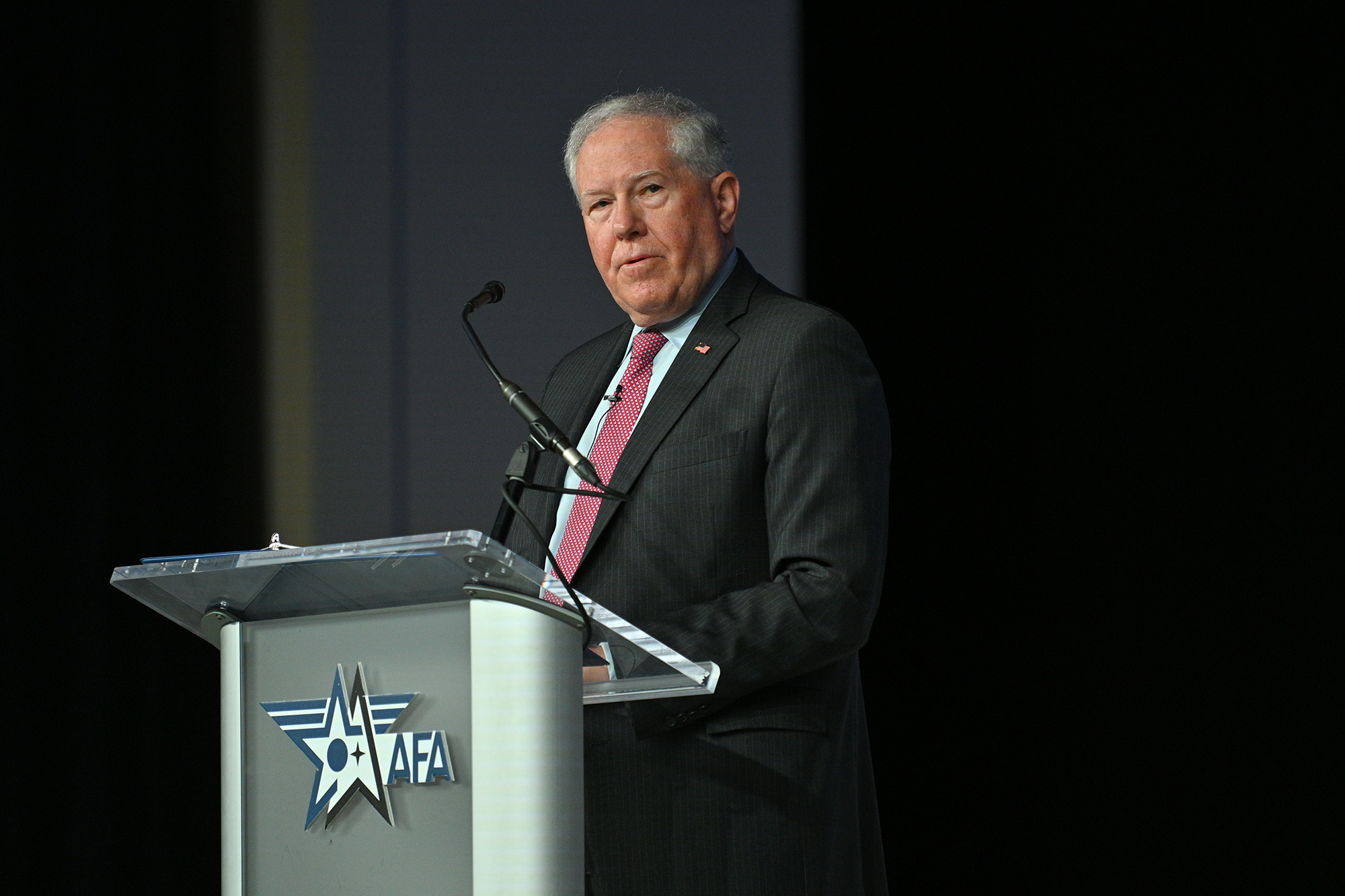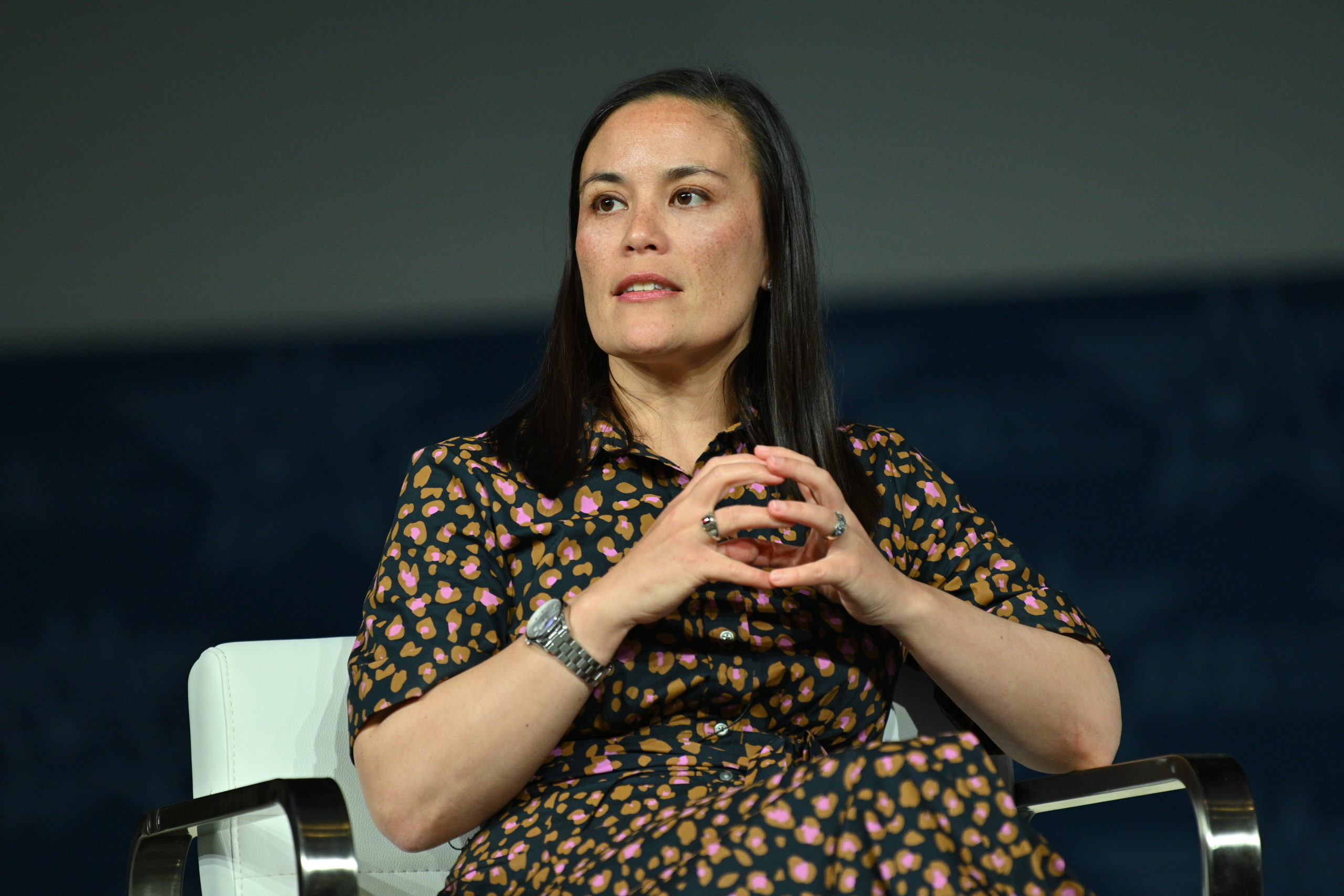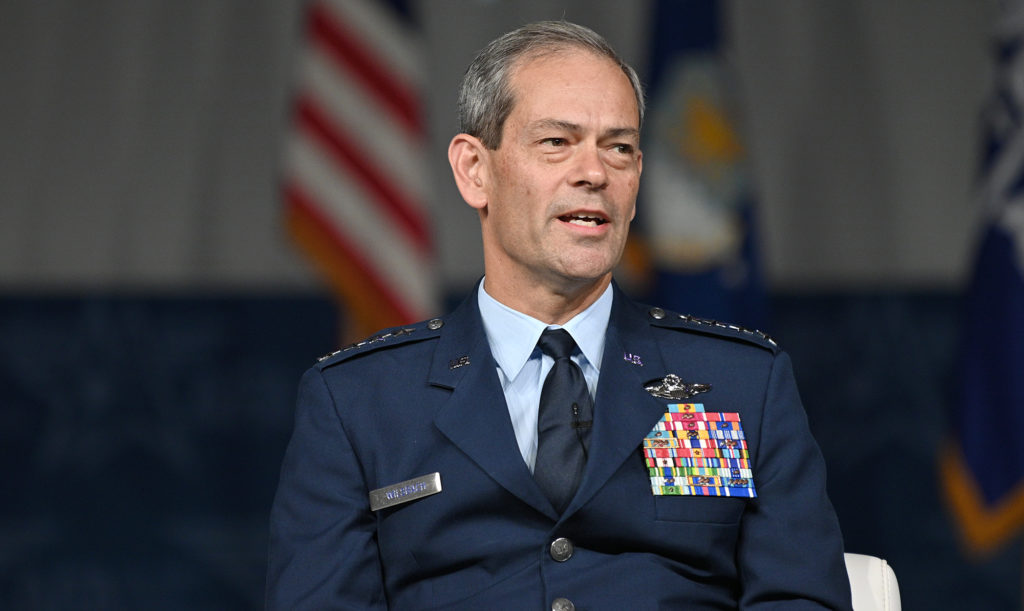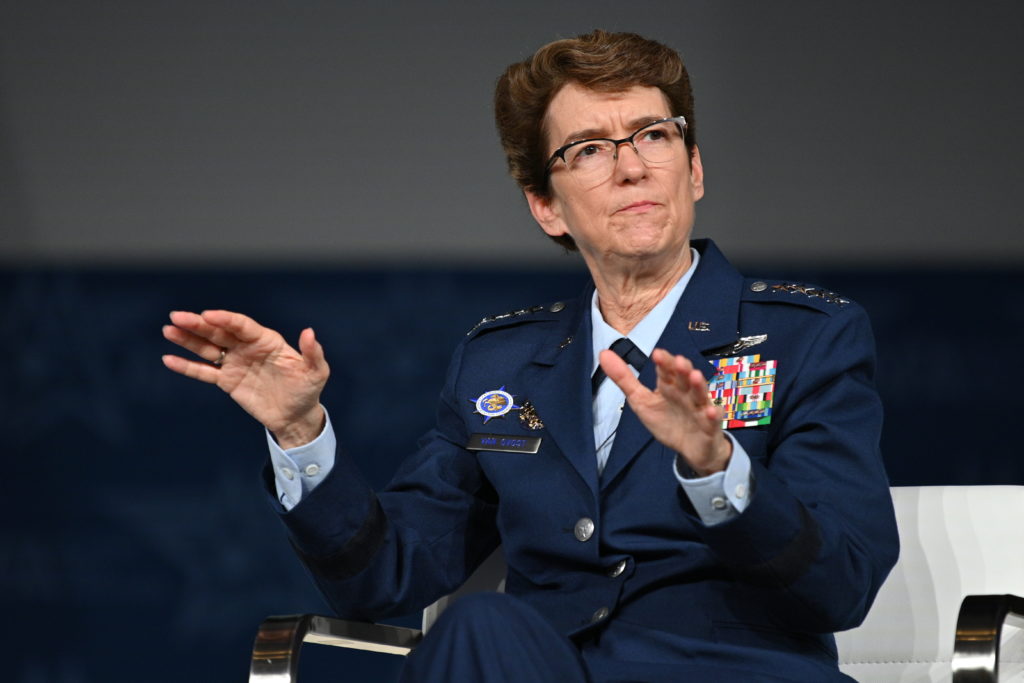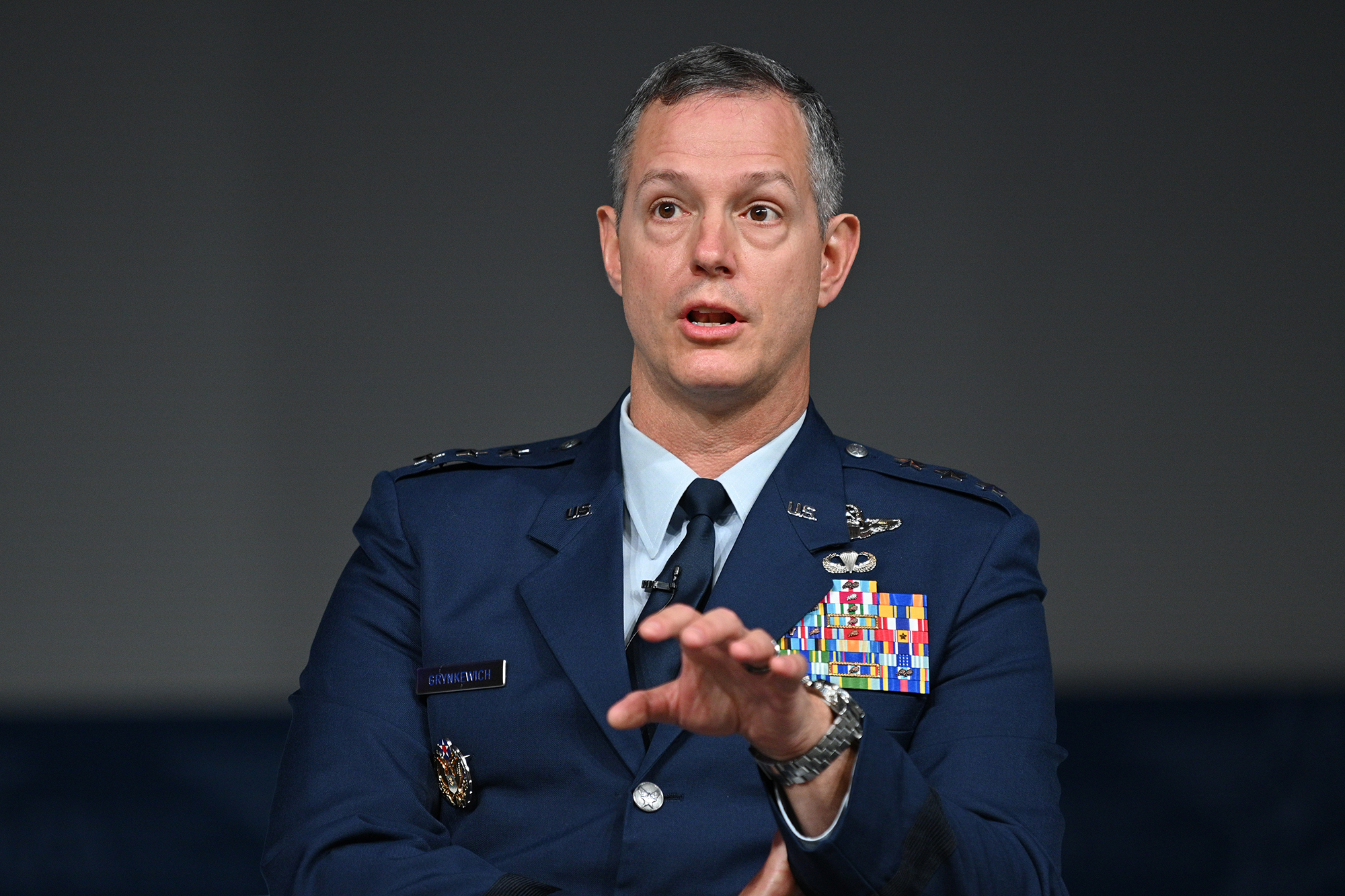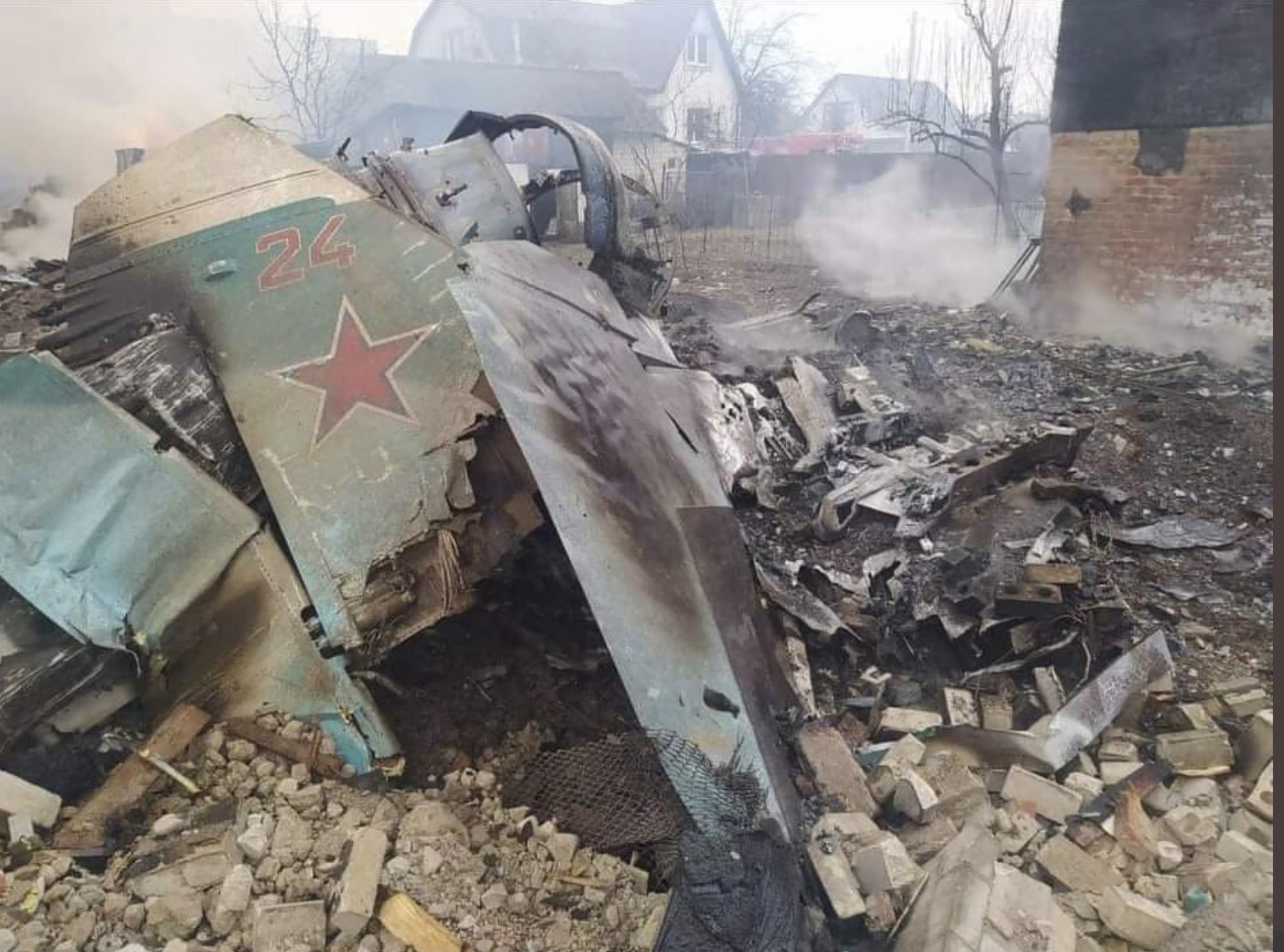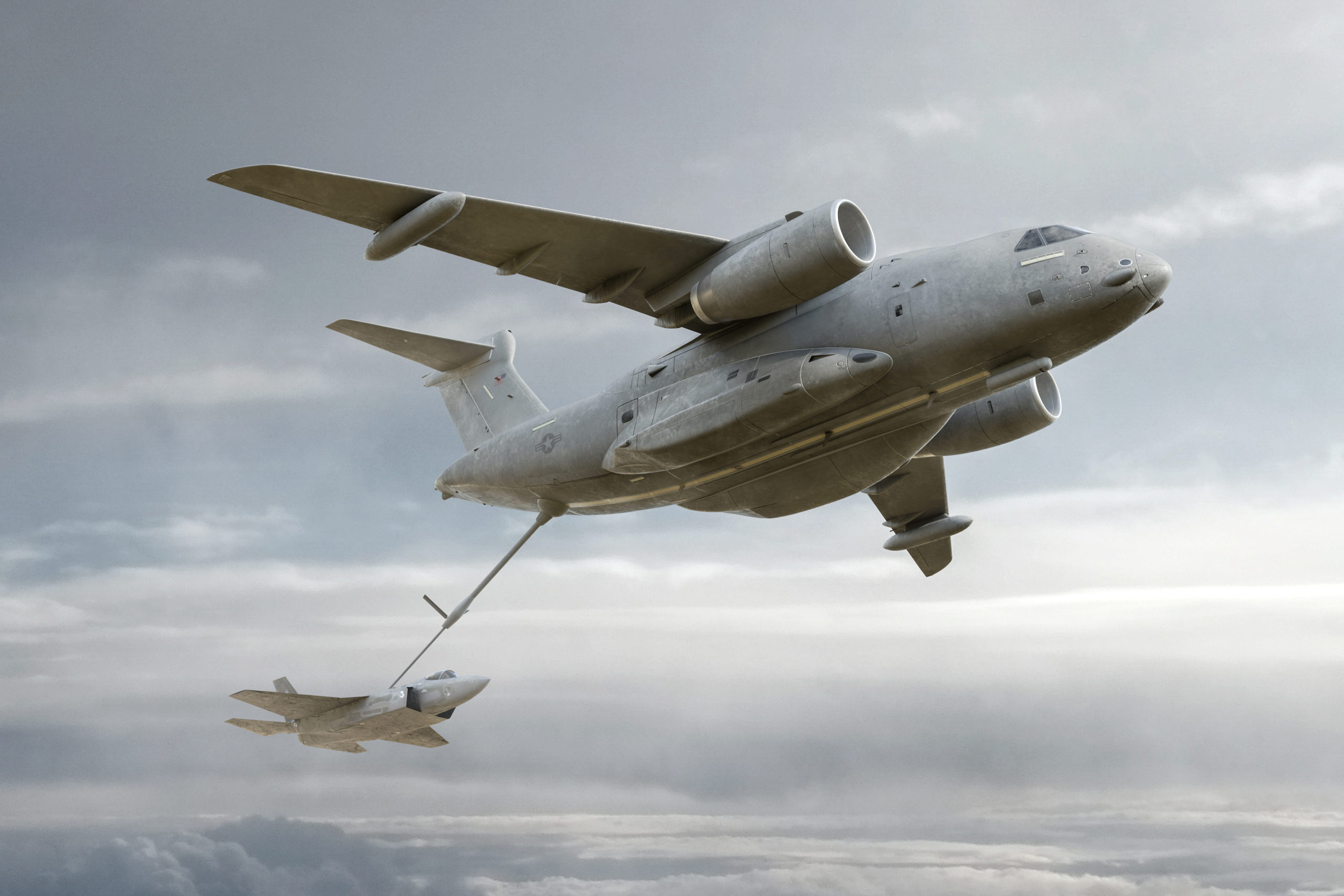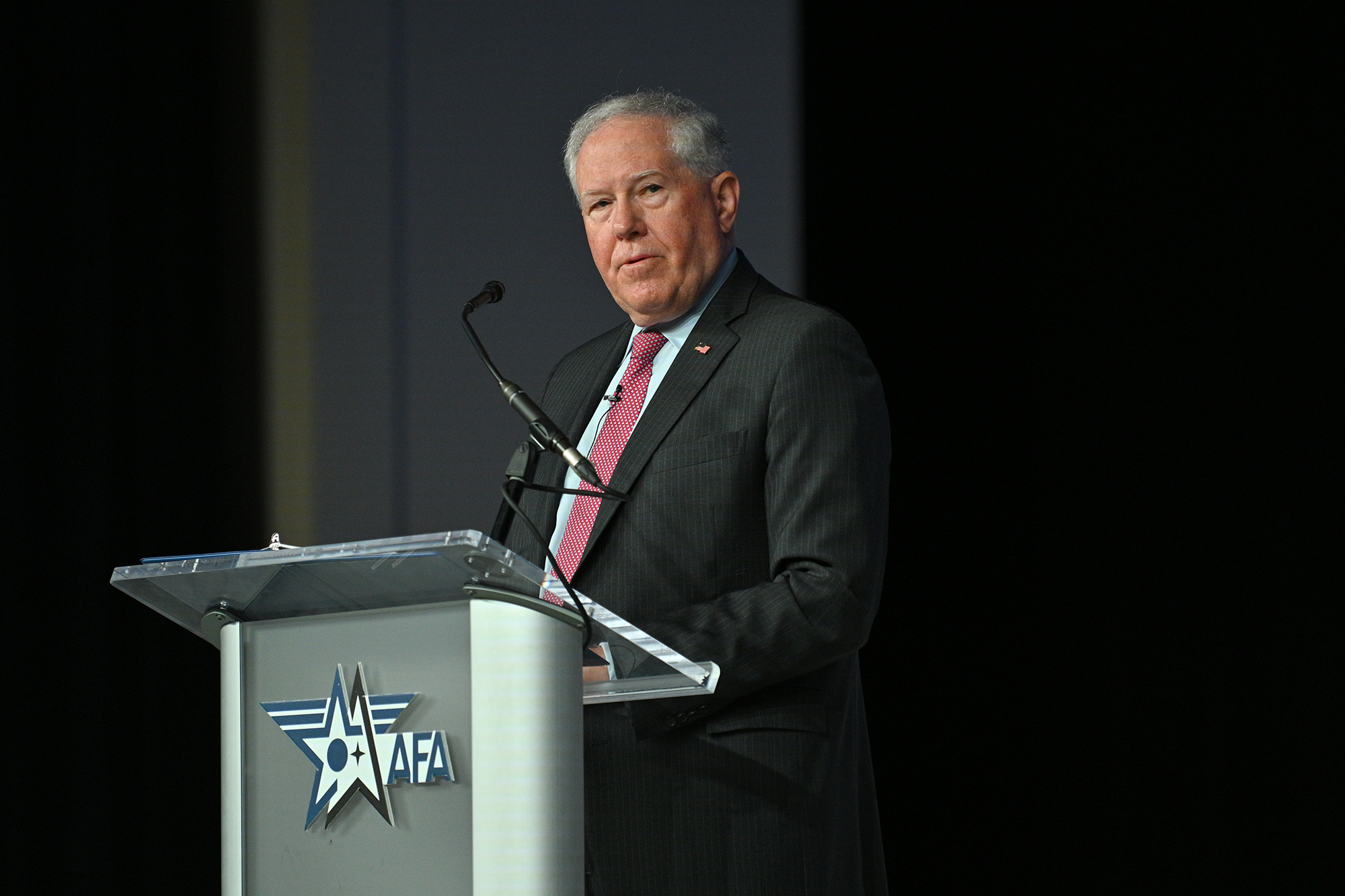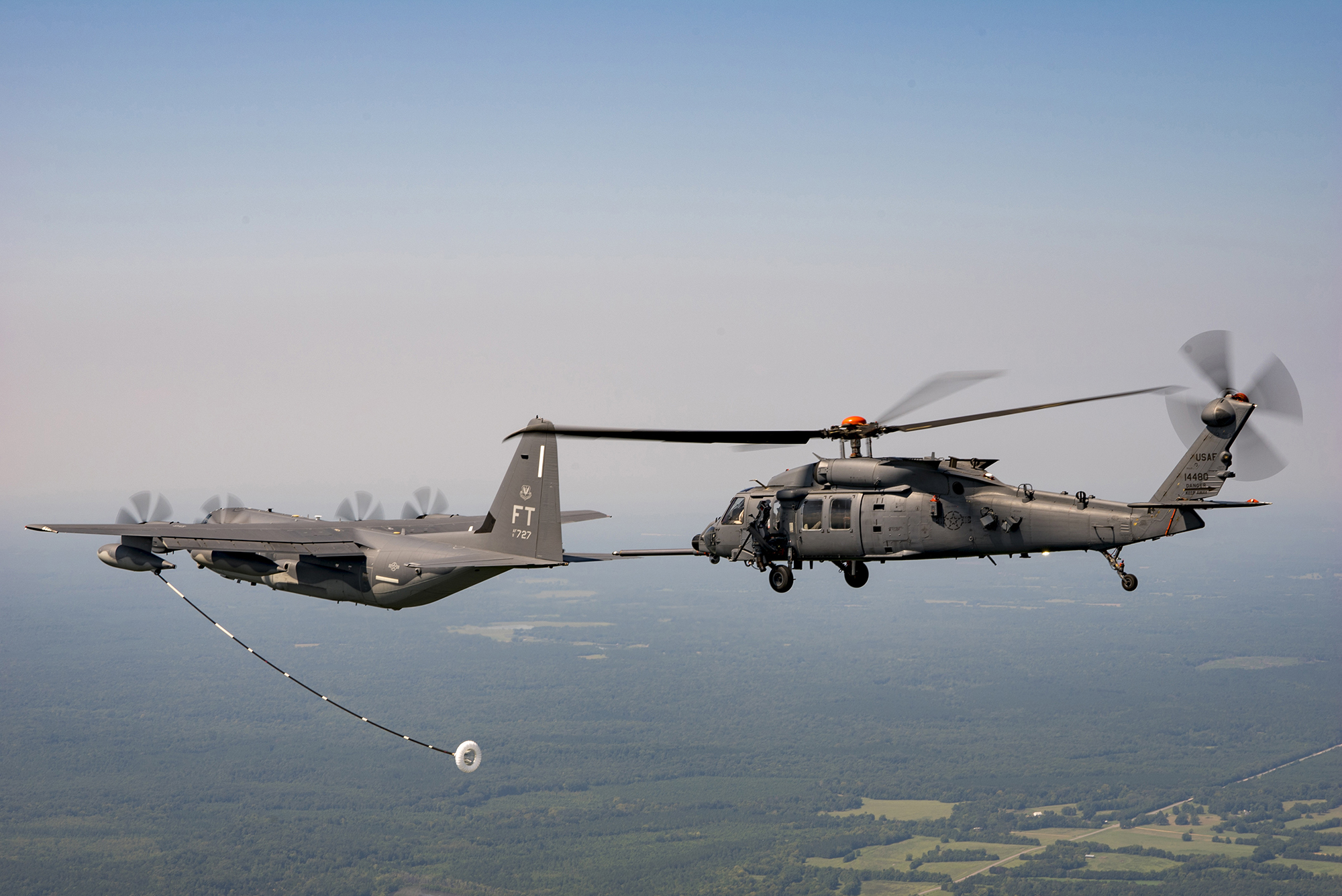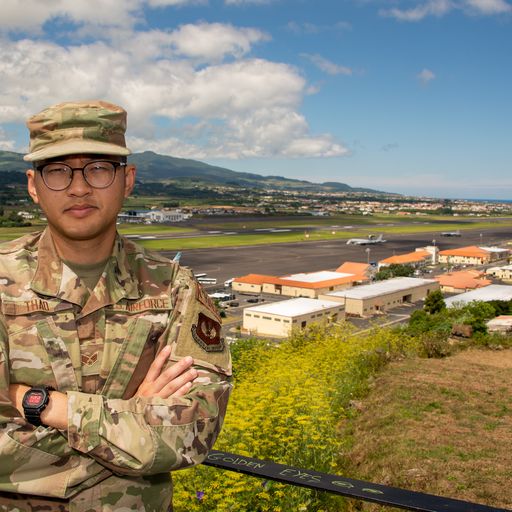Air Force Secretary Frank Kendall said the Air Force’s Advanced Battle Management System will likely fail without a single integrator, and he has selected Brig. Gen. Luke C.G. Cropsey to do that job. Cropsey will report to Air Force acquisition executive Andrew Hunter and Assistant Secretary for Space Integration Frank Calvelli.
“It’s the hardest acquisition job I’ve ever given anybody,” Kendall told reporters at AFA’s Air, Space & Cyber Conference in suburban Washington, D.C.
Kendall also discussed areas of capability that need more attention, such as electronic warfare, mobility, and munitions; and said the ability to launch the E-7 AWACS replacement is his greatest concern in the event of a continuing resolution. He also said the KC-46 will overcome its problems and will be a good tanker for the Air Force.
Joint command, control, and communications programs are “the most unsuccessful programs in the history of DOD” because they’re “broad; they require interface across the department” from organizations that don’t want to change to accommodate them; and “they’re very complicated,” Kendall said. Such programs start with “visionary” ideas that don’t include a practical plan of execution, he noted. Inevitably, they suffer from schedule, cost, and performance problems, “and then the program dies.”
The solution is to put someone in charge who will be a “centralized authority” over program executive officers and program managers in the C3 battle management area. “Luke will be that authority … the glue that ties it all together,” Kendall said. Cropsey will also be the interface with the other services and the Office of the Secretary of Defense, so that the Air Force’s systems will be compatible with those of other services and agencies.
“It’s complicated; there are a lot of players in the game; and getting everybody in line is going to be tough,” Kendall said. With top-down support, Cropsey will be able to “enforce the decisions he wants to make and get everybody aligned.”
In his keynote ASC speech, Kendall said there are areas beyond his seven operational imperatives that aren’t on that list but will get high-level attention because they cut across all the others. They include electronic warfare, munitions, and mobility/aerial refueling.
“They are problems we’ve got to solve, and we haven’t solved them yet,” Kendall said. “We have plans to address all of them, and we’re trying to get resources to address all of them as quickly as possible.”
Electronic warfare didn’t get enough attention over the last 20 years because the enemy didn’t have such capability, but China and Russia are well versed in it, Kendall noted.
Munitions is “another area that traditionally doesn’t fare as well in budgets as it should” but has come into high relief because of the rapid exhaustion of weapons stocks in the fight against ISIS and in the supply of weapons to Ukraine, he noted.
Kendall said that while he is aware of moves to modularize weapons—which could reduce costs by increasing volume and introducing new entrants in competition for seekers, warheads, motors, etc.—he doesn’t see that approach taking over the munitions industry, even though there’s “some potential, there.”
“In my experience … most missiles are very highly tailored to what you’re trying to do. So, the ability to have modularity can be limited in practice.”
The potential for competition is interesting to Kendall, though. He said the leader-follower arrangements during the Cold War, in which two suppliers would compete on price and capability for the lion’s share of annual production lots, “really did drive down cost a lot.”
“I’m a big believer in competition. But the volume has to be there to justify it,” he said.
Munitions production is “getting a lot of attention” on Capitol Hill right now, Kendall said, and he has advised those members of Congress pushing for it that “you need to be thinking about wartime capabilities, not just peacetime” production.
Mobility and tanking also need scrutiny, Kendall said, because until recently, it was thought that such assets—usually big-wing aircraft—could be kept at a safe distance from the enemy. But China and other competitors are fielding long-range weapons that can put those capabilities at risk.
“As the threats extend the range at which they can engage our platforms, we’ve got to re-think that. So this is a longer-term look at available technologies” in the area of mobility.
These three “non-”operational imperatives will not get “the same level of attention” as the imperatives, but “it’s not too early to put some effort” into planning the next steps in these areas. The first characteristic needed of new mobility aircraft will be that they are “more resilient and survivable.”
In the event of a continuing resolution in lieu of a defense authorization bill, Kendall said he’s most concerned about the E-7 Wedgetail airplane the Air Force plans to buy to replace the aging E-3 AWACS. A CR will generally prevent a “new start,” but Kendall said he is working with Congress on reprogramming funds to get the E-7 beyond that point so it can be a continuing program instead.
“I’m urging Congress to get it done,” he said of the defense bill. “Time is an unrecoverable asset.”
Kendall said of the KC-46 that 97 percent of its requirements have been met and “we will get it to work.” That program wound up being more complex than anyone—even Kendall—expected, he said, and Boeing, which signed on to build it at a fixed price, “lost a lot of money” on it.
But “we’ll get there,” he said, though “I won’t promise it won’t have more problems.”
